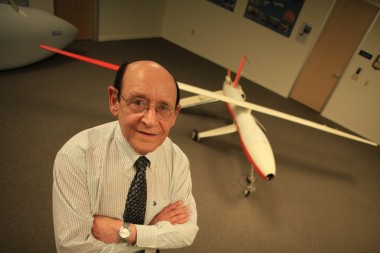Tag: Television programs
KQED launches 11th season of ImageMakers and new spinoff show
ImageMakers, the indie film showcase curated by San Francisco’s KQED TV, will debut the Oscar-winning film Curfew, May 12. Every year, KQED Program Director ...Few ‘Magic Moments’ in March pledge
Pledge results reported by public TV stations from recently concluded on-air fundraisers were down 20 percent to 25 percent from the March ...Tough reality for PBS: Roadshow audience doesn’t flow easily into Market Warriors
PBS has ended production of Market Warriors, the Monday-night series that was a lynchpin in its strategy to hold on to viewers of Antiques Roadshow, the ...Public TV’s first TED Talks Education special tapes live this week
TED, the nonprofit behind the high-profile conferences about ideas in technology, entertainment and design (as well as NPR’s new weekend series), and ...Nine media projects receive Latino Public Broadcasting funding
Media projects backed during LPB's latest grant round include Children of Giant, Hector Galan's documentary exploring how production of the epic feature film Giant affected ...Nova faulted for failing to disclose funder’s interest in drones
A recent Nova documentary about unmanned aerial drones sparked a flurry of complaints from viewers upset by what the program’s producers didn’t ...Pubradio and TV audiences continue migration to digital, State of News Media study shows
Audiences for public radio and television news continue to spend less time with legacy broadcast platforms as they transition to digital listening ...PBS cancels Market Warriors series from Antiques Roadshow producer
This item has been updated and reposted with additional information. PBS is ending production of Market Warriors, the much-anticipated series that premiered in July ...WGBH selects National Geographic TV exec to head national programming
John Bredar, a senior executive producer at National Geographic Television, is the new head of national programming at major producing station WGBH ...POV and StoryCorps each receive $1 million from MacArthur Foundation
American Documentary, home to PBS’s independent film showcase POV, and StoryCorps, the oral history project heard on NPR, are each receiving $1 million ...More than airtime: Documentary producers search for new frontiers of engaging audiences
During a conference at the U.S. Institute of Peace Feb. 28, the makers of human rights documentaries discussed the techniques and challenges ...POV, StoryCorps get $1 million each from MacArthur Foundation
American Documentary, home to PBS’s independent film showcase POV, and StoryCorps, the oral history project heard on NPR, are each receiving $1 million as ...Portrait of a ‘Kind Hearted Woman’ as she finds her voice
Kind-Hearted Woman, David Sutherland's latest documentary series for Frontline is a five-hour story of abuse and triumph for a Native American woman. His meticulous techniques ...Putting more public service into public media at 2013 APTS Summit
Representatives from four sectors of the public service community made a case for more partnerships with public television during the opening session ...CNBC buys Nightly Business Report; show leaving Miami
Nightly Business Report, the public TV business news show that has repeatedly shed staff during nearly three tumultuous years under two owners, has been ...






